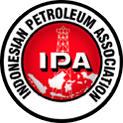Publications
A case study: stop invasion damage. The utilisation of WBM muds in HPHT wells
Proceedings Title : Proc. Indon. Petrol. Assoc., 48th Ann. Conv., 2024
Hydrocarbons with large quantities under High Temperature High Pressure (HTHP) conditions are one of the major challenges to be explored. The biggest challenge is the mud design that can overcome the problems in HTHP well. Well XX is planned to drill with total depth of 9600 ft MD in HTHP conditions with temperatures reaching 419°F and has a narrow window between pore pressure and fracture gradient. In section 8.5", the well lithology is limestone formation that tends to easily collapse and form cavities. Therefore, the mud design formulation must have the ability to overcome the problem of loss circulation and formation damage. Conventionally, to solve the problem of circulation loss, LCM are required.
In drilling operation there are many cases led to a formation damage, the condition where reduction of reservoir production happen due to impairment of permeability of reservoir. The cause of it is mainly by drilling mud that slightly change the reservoir fluids properties. Acid Soluble Micronize Cellulose Fiber (ASMCF) LCMs is used to help mitigate losses. It contains of the proper particle size distribution (PSD) or acid-solubility characteristics for useful application in production zones. The additive is a non-invasive reservoir protection that design by specific graded and sized organic and inorganic materials. It will form an impermanent impermeable barrier, cease the fluid invasion and avoid damage to formation, also withstand in HTHP conditions.
In this paper, laboratory tests were carried out using three scenarios to compare ASCMCF with conventional LCM. The result shown that the use of ASMCF is proven to be more effective in preventing loss circulation and protecting the formation from fluid invasion, so it is recommended to make the transition from conventional LCM to ASMCF.
Log In as an IPA Member to Download Publication for Free.
